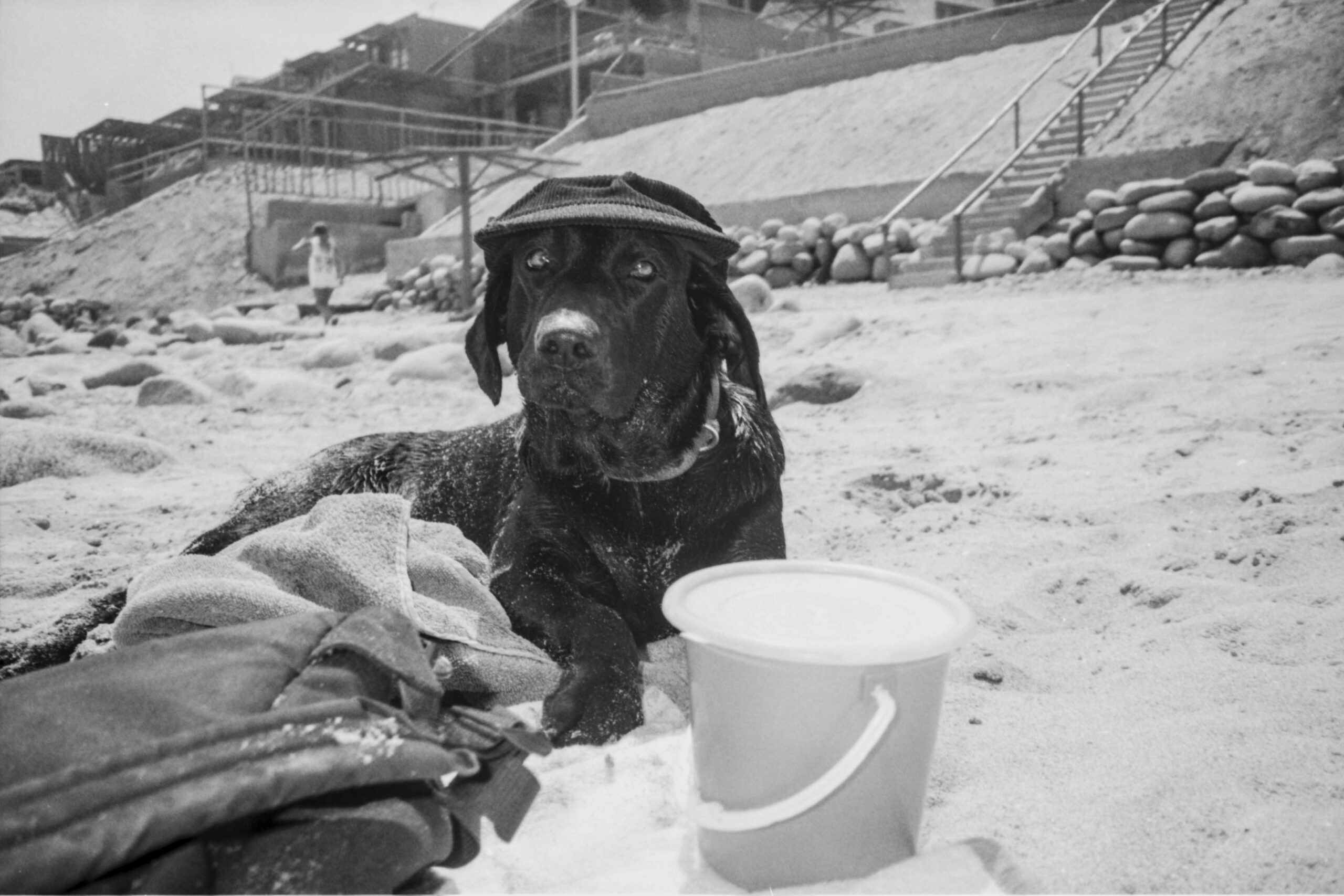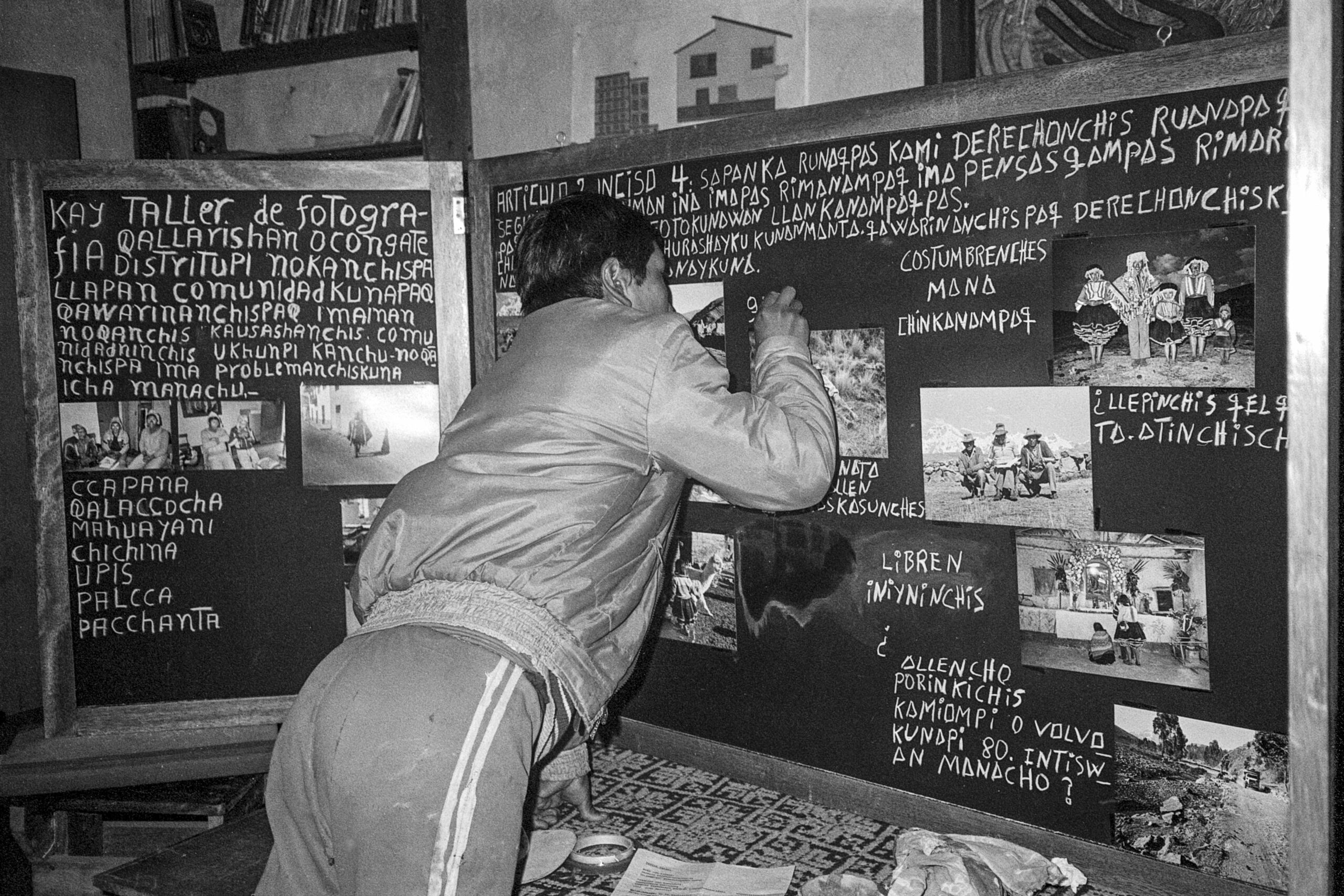TAFOS
Men prepare the ropes to get a consistent thickness for the construction of the Q’eswachaka bridge.
© Nieves Callasi, Yanaoca workshop / TAFOS
Talleres de Fotografía Social (TAFOS) was a pioneering community photography project that ran from 1986-98. Its most active years coincided with the internal conflict in Peru. Working in conjunction with trade unions, youth groups, farming cooperatives, and many other community groups, TAFOS supported workshops for over 270 community photographers from 30 communities across the country. These photographers used the camera as a tool to support non-violent resistance and community organisation in the midst of the conflict.
During the years of the Peruvian conflict, the Maoist guerrilla group Shining Path and its rival, the Marxist-Leninist group Túpac Amaru Revolutionary Movement (MRTA), waged a ferocious revolutionary insurgency against the Peruvian state as the country suffered severe economic collapse, which saw many plunge into poverty. With both sides employing brutal terror tactics, much of the fighting took place in the Andean regions, drastically affecting the lives of rural indigenous communities who disproportionately suffered from the abuses, killings, and disappearances. Many ordinary Peruvians found themselves stuck in the crossfire as the violence escalated. Civilians worked together to defend, protect, and organise themselves against the violence, insecurity, and economic deprivation. A thriving popular movement created bottom-up support networks and lifelines for many. It was within this context that TAFOS emerged.

Men and Women Playing
© Sebastian Turpo, Ayaviri workshop / TAFOS
The first TAFOS workshop came about because a local leader, Gregorio Condori, asked a German photographer and his wife, Thomas and Helga Müller, who had been working in his highland community of Ocongate, near Cusco, if he could borrow a camera to record evidence against a judge who was demanding a bribe. Subsequently, Condori and Müller suggested to the Ocongate Committee of Human Rights that they run photography workshops so more of its members could act as community photographers. Many other workshops followed as more community groups approached TAFOS wanting to learn photography: campesino collectives in the Andean regions such as Ayacucho; miner’s unions in Junín; youth and women’s groups; students; and other community organisations in the slums of Peru’s main cities and Afro-Peruvian communities on the coast.
TAFOS photographers were active members of grassroots organisations committed to learning photography as a tool to communicate with others. They documented working conditions, political upheaval, grassroots mobilisation, and daily community life during a turbulent period of Peruvian history, using photography to bolster community resistance and resilience in the face of violence and conflict. TAFOS provided basic photographic training, equipment, film, developing, and printing services to the community groups who would direct and lead on their photographic activities. The workshops started to wind down in 1993 as the changing political landscape reduced the demand. An archive of over 150,000 TAFOS images is housed at the Pontifical Universidad Católica del Perú in Lima, where it continues to be used by researchers and students.

Miner protests with photographs
© Felix Asto, Morococho workshop / TAFOS

© Unknown photographer / TAFOS
‘One of the ways to create a new social order in a fragmented country is for the people to rebuild their image, their face, their words… It was out of this drama and the need to recover their own image that the TAFOS project arose… In this context, photography is not an end but a means: of local, sectorial and national identification, a means to denounce on the one hand and a weapon for ideological confrontation and for recovering the right to identity and difference on the other’.

Bia (my labrador bitch) on the seashore, Playa Pulpos.
© Luis Garcia, Musicians workshop / TAFOS

Looking at a TAFOS newspaper
© Nicacio Chiara, Yanaoca workshop / TAFOS


